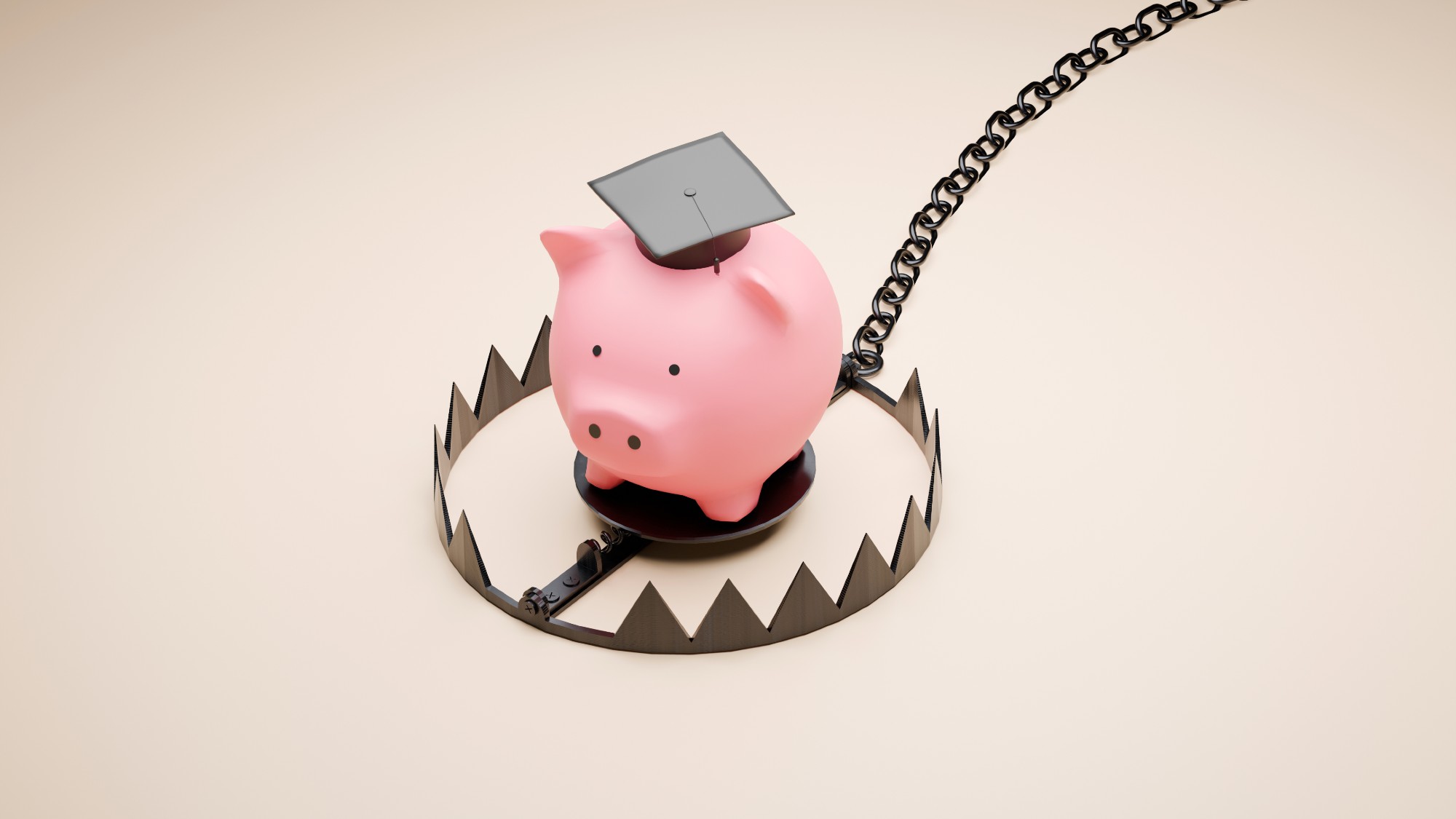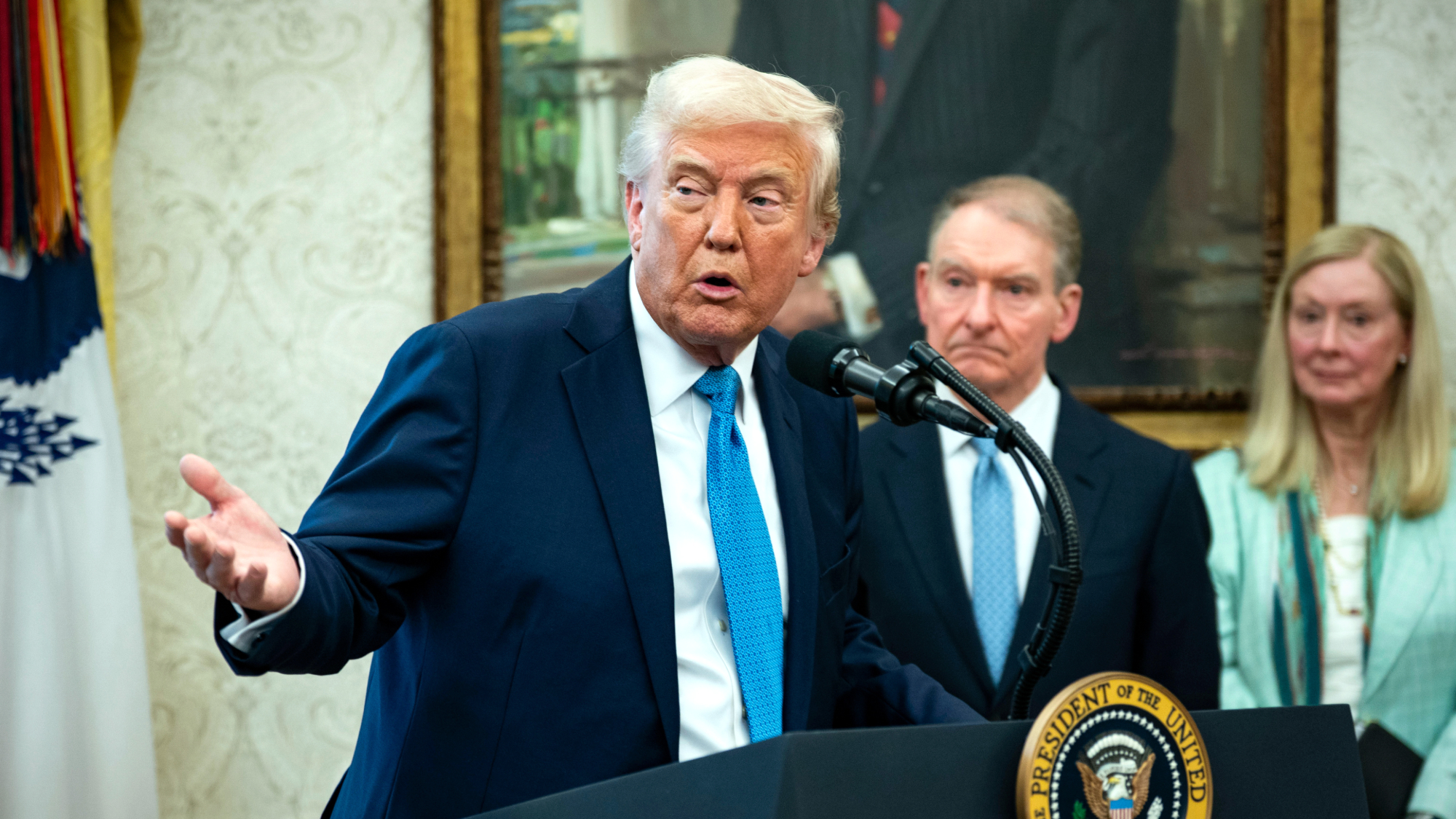The bull market meets its match
The stock market's record-setting run is officially over, thanks to coronavirus


We officially have a bear market.
After peaking at an all-time high of 29,551.42 on February 12, the Dow Jones Industrial Average began falling as panic and economic disruption from the coronavirus outbreak spread across the globe. On Wednesday, the Dow's plunge closed just over 20 percent below its February peak, crossing the magic threshold of bear market territory, and ending what is widely considered the longest bull market run in history.
Both the S&P 500 and the Nasdaq have been on a similar trajectory, and closed 19 percent down from their own mid-February peaks on Wednesday. They then dropped roughly another seven percent on Thursday's opening bell, with the S&P falling so fast it triggered an automatic 15-minute halt to trading — the second time that's happened this week. The Dow also dropped another 8 percent Thursday morning.
The Week
Escape your echo chamber. Get the facts behind the news, plus analysis from multiple perspectives.

Sign up for The Week's Free Newsletters
From our morning news briefing to a weekly Good News Newsletter, get the best of The Week delivered directly to your inbox.
From our morning news briefing to a weekly Good News Newsletter, get the best of The Week delivered directly to your inbox.
Generally speaking, you wait until the close of trading to decide how much an index moved for that day. But obviously, unless the S&P and the Nasdaq make up all the ground they just lost, they'll end today in bear markets as well.
"Bull" and "bear" markets are usually defined as periods when stocks rise at least 20 percent from a previous trough or fall at least 20 percent from a previous peak, respectively. (Though sometimes 15 percent is cited.) It's all completely subjective, of course: You can debate all day what size of increase or decrease should qualify, or whether the close is when you should measure the change versus any point in the day, or whether you should look at a whole index, a particular market, or even which one. But the mainstream agreement is generally that the last bear market in America came with the Great Recession: It ran for 17 months, from October 2007 to March 2009, with the S&P 500 ultimately falling over 56 percent. The end of that bear market then kicked off a bull run that, as I mentioned, is generally considered the all-time winner for duration, if not necessarily the scale of its rise.
At any rate, that bull market ended pretty decisively this week.
The spread of the coronavirus began in China in February, and rapidly expanded to major quarantines and shutdowns of cities across the country, crushing economic activity within China as well as trade going in and out. Since then, the disease has broken out in numerous countries, including the United States, sparking major shutdowns of school systems, industries, and in a few instances — like Italy and Norway — of entire societies. All told, over 118,000 people have been infected worldwide, and around 4,300 have died — including at least 1,267 infections and 38 deaths here in America. On Wednesday, the World Health Organization officially declared the coronavirus a "pandemic."
A free daily email with the biggest news stories of the day – and the best features from TheWeek.com
The resulting market panic from all that has sent stocks on wild swings in the last week or two, soaring over 1,000 points one day, and then crashing just as far or farther the next. The Dow looks like it will soon reach its largest one-week loss ever. Monday actually brought the worst single-day drop in stocks since 2008, and comparisons of the current moment to the Great Recession are becoming more common daily. Twenty percent is not nearly as bad a fall as 56 percent, obviously. But a drop of that scale in less than a month is no small matter, either.
President Trump apparently views the stock market as one of the key indicators of his administration's success, and he's reportedly grown to fury at the current situation, lashing out at staff and raging against the Federal Reserve for not doing enough — despite the central bank's recent emergency cut to interest rates.
The Trump administration's handling of the crisis so far has been, to be blunt, blinkered and incompetent — unable to even get an adequate testing apparatus off the ground, much less mount a bigger coordinated response. Trump is reportedly trying to downplay the severity of the disease for fear it will step on his reputation in an election year, and has repeatedly suggested the coronavirus will be no worse than the common flu, or will pass with the warm weather. The president held a more somber televised address Wednesday evening, announcing a 30-day ban on all travel from Europe, among other things. But this seemed to only sow further confusion. By today Trump was back to insisting markets will be "just fine," and the whole haphazard feel of the White House's responses has arguably only added to the chaos in the stock markets.
Meanwhile, major events like the South by Southwest festival in Austin have been canceled, the NBA just halted its season until further notice, and as of now the NCAA will hold its March Madness games without fans present. Universities and public schools across the country are closing their doors. Even Tom Hanks just announced he and his wife tested positive for COVID-19 while on location for a film in Australia.
It's always worth remembering that the stock market is not the real economy. The indexes measure how much traders are willing to pay each other for stocks based on speculation and risk assessment of companies. Roughly half of Americans own no stocks at all, so the recent roller-coaster ride hasn't affected them directly. The drop has hurt the other half, most of whom rely on stocks to fund their 401Ks and some portion of their savings. But even for that half of the population, ownership is vertiginously skewed: Just 10 percent of Americans hold 84 percent of all stocks.
Concrete damage to the U.S. economy, in terms of lost jobs and wages and livelihoods, remains largely speculative. But given the scale of the disruptions to production and trade around the globe, and the veritable certainty that the coronavirus outbreak in the U.S. will become much larger, the real economy will most likely start feeling the pain soon enough. Observers and analysts have already dramatically cut the projections for global economic growth this year, and the first reports of American layoffs related to the virus are trickling in.
The next jobs report from the U.S. government won't land for roughly another three weeks, unfortunately. But that will give us a clearer picture of the coronavirus' on-the-ground economic consequences.
Want more essential commentary and analysis like this delivered straight to your inbox? Sign up for The Week's "Today's best articles" newsletter here.
Jeff Spross was the economics and business correspondent at TheWeek.com. He was previously a reporter at ThinkProgress.
-
 Do you have to pay taxes on student loan forgiveness?
Do you have to pay taxes on student loan forgiveness?The Explainer As of 2026, some loan borrowers may face a sizable tax bill
-
 Planning a move? Here are the steps to take next.
Planning a move? Here are the steps to take next.the explainer Stay organized and on budget
-
 What should you look out for when buying a house?
What should you look out for when buying a house?The Explainer Avoid a case of buyer’s remorse
-
 The billionaires’ wealth tax: a catastrophe for California?
The billionaires’ wealth tax: a catastrophe for California?Talking Point Peter Thiel and Larry Page preparing to change state residency
-
 Bari Weiss’ ‘60 Minutes’ scandal is about more than one report
Bari Weiss’ ‘60 Minutes’ scandal is about more than one reportIN THE SPOTLIGHT By blocking an approved segment on a controversial prison holding US deportees in El Salvador, the editor-in-chief of CBS News has become the main story
-
 Has Zohran Mamdani shown the Democrats how to win again?
Has Zohran Mamdani shown the Democrats how to win again?Today’s Big Question New York City mayoral election touted as victory for left-wing populists but moderate centrist wins elsewhere present more complex path for Democratic Party
-
 Millions turn out for anti-Trump ‘No Kings’ rallies
Millions turn out for anti-Trump ‘No Kings’ ralliesSpeed Read An estimated 7 million people participated, 2 million more than at the first ‘No Kings’ protest in June
-
 ‘We must empower young athletes with the knowledge to stay safe’
‘We must empower young athletes with the knowledge to stay safe’Instant Opinion Opinion, comment and editorials of the day
-
 Ghislaine Maxwell: angling for a Trump pardon
Ghislaine Maxwell: angling for a Trump pardonTalking Point Convicted sex trafficker's testimony could shed new light on president's links to Jeffrey Epstein
-
 The last words and final moments of 40 presidents
The last words and final moments of 40 presidentsThe Explainer Some are eloquent quotes worthy of the holders of the highest office in the nation, and others... aren't
-
 IMF sees slump from tariffs, Trump tries to calm markets
IMF sees slump from tariffs, Trump tries to calm marketsSpeed Read The International Monetary Fund predicts the U.S. and global economies will slow significantly due to the president's trade war
